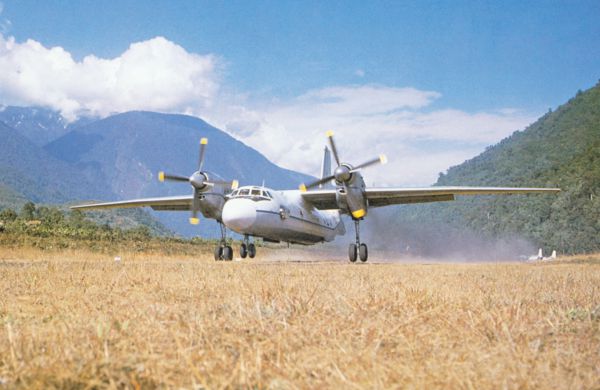Fortunately India had a long preparatory period before the 1971 Bangladesh war. The fighting formations had enough time to get equipped and rehearse; naval forces could plan for blockades, the Indian Air Force (IAF) limbered up for strikes, camouflage and ascertaining the radar Order of Battle (Orbat) of the Pakistan Air Force (PAF). This last job is best done by electronic intelligence (ELINT) operations; I was involved in ELINT operations. There are no secrets about this fact. All countries who can, conduct ELINT operations. December 71 dawned and in the evening of 3 December 1971 the PAF carried out their pre-emptive strike on IAF airfields starting Operation Cactus Lily.
Sweeping the Eastern and Western Fronts
I was then posted in Odisha, and after dispersing our own aircraft I was airborne in the ELINT at about 2200 hours to reconfirm the radar orbat as had been painstakingly recorded during the preceding months. It was full moon with terrific visibility, We flew at about 28000 feet charting a course from Kolkata northwards, turning East around East Pakistan keeping a good 20 kms inside India till we reached Agartala. We had no idea of any fighters to cover us because we heard no other RT transmissions.
It was quite eerie knowing that hostilities had been declared and here we were carrying out the first passive operations against the adversary. Surely, all Indian radars were active looking out for enemy aircraft. If anything, the ELINT platform is a most precious and extremely expensive piece of airborne equipment, and critical for knowing what the enemy radars are doing, where they are and are they mobile or static. If there had been any threat to the ELINT mission, I was sure help was close by. I was wrong. Later, I learnt that not one IAF fighter was airborne and all our aircraft on Operational Readiness Platforms (ORP) were for intercepting PAF bombers. We were unprotected and alone. This was to be repeated two days later on the Western front. I landed back at about 0200 hours on 4 December, exhausted and tense, yet excited by the events that must follow the declaration of hostilities. How many would perish in this war I wondered? Many did.
By nightfall on 4 December, I was at an airfield in Western UP. The next morning I was tasked to fly a lengthy sweep starting from somewhere near Jammu flying South just inside the border. Many thoughts went through my mind, and I talked it over with the other pilot and navigator. How close to the border would be safe, how should we position ourselves near Jammu, would we have fighter cover close by, in case of a threat what procedure would we follow, and how do we get into a safe zone?
Losing the ELINT aircraft would be unacceptable and disastrous. I was at 30,000 feet by 0730 hours. In our aircraft the navigator was extremely busy logging his position every two minutes. The special operators were recording their findings. Later, the two data would be correlated and enemy radar dispositions would be confirmed. We had flown this path many times during the last six months. Most surely the adversary was aware of our intent and took counter measures. But today, 5 December, he dare not shut down even one radar and give us that opening to enter. It was a very good day to revalidate their radar orbat. Were they not doing the same thing we asked each other?


Were We Vulnerable to Interception?
In the cockpit we talked about the possibility of being intercepted by Mirage III, F-86 or F-104s. Could not one of these enter Indian airspace very low, then climb rapidly with afterburners to about 30,000 ft, fire missiles at us and scoot back? What had the IAF done to ensure that such an attack could not happen? We had no inkling about this. Our job was to sweep, record, return, collate, compare, and then to do it again. The reader should be amazed at this mind-set in December 1971. I know today that fighter cover was never planned for ELINT operations during peace. But we were now at war, fighters were flying thick and fast, our air defence environment was fully loaded and the ELINT aircraft was the only electronic eyes & ears we had. Did it not need super protection? Forget about the crew, what about the aircraft with its irreplaceable equipment? By the time we had talked about all this we were well past Jaisalmer heading towards Jamnagar, from where we returned to our base intact.
I often ruminate as to whether the PAF ever considered intercepting the Indian ELINT aircraft even with a suicide mission. You may speculate how the IAF would intercept Pakistani ELINT aircraft today. You will recall that on 10 August 1999, a Pakistan Navy Atlantique was shot down by IAF MiGs from Bhuj as the Atlantique had transgressed into Indian airspace on what appeared to be ELINT mission. A month earlier in July 1999, India had destroyed and evicted Pakistani intrusions in Kargil.
The next day, 6 December, another sweep was flown by another crew, and yes, this time fighter escorts were actually positioned close by. The value of our ELINT missions had dawned on us.
Across East Pakistan Unarmed
Maintain 090 Degrees. It is asserted that the PAF ceased to exist as a fighting force in East Pakistan by 6 December, and that not a single PAF fighter got airborne after that date. True or false, I do not know, but I flew right across East Pakistan on 9 December. I was on a routine flight in an An-12 from Sarsawa in Western UP to Kumbigram or Silchar. Just short of Katihar, where we normally turn North towards Kishanganj, we got a radio call from one of our radars, advising us to continue on a heading of 090. Both of us (pilots) looked at each other in surprise, and discussed it with the navigator who was senior to us. Nonsense we concluded. This must be a Pakistani controller luring us into his trap. No way were we going 090 degrees and dutifully turned North. Immediately, the same radar called up and once again asked us to turn back onto 090. We maintained silence convinced that though the call signs and frequency were correct, this has to be a devious trap. Why should the IAF make an unarmed An-12 fly into East Pakistan at the height of armed hostilities? This is “pucca gadbad” we agreed, and remained North-bound.
Authenticate Yourself. Very soon a stern message came across, a different voice, I clearly recollect, demanding why we were disobeying instructions. On the flight deck we decided to authenticate the credentials of the radar unit. You will know that all aircraft and ATC units have authentication sheets which have a ‘Challenge & Answer’ system. It is used to ascertain the identity of an approaching aircraft. The challenge is given by ATC and answered by the aircraft. The authentication sheet has alpha-numeric combinations and it is a secret document. So we decided to challenge the radar unit and, lo and behold, he answered correctly. Considering we were being asked to enter East Pakistan we decided to do it again with another set of codes. The reply was correct. The option of not turning East onto 090 direct for Kumbigram was no longer available. Very reluctantly we banked right and got onto a course direct from Kishanganj to Kumbigram. I do not think any IAF aircraft had done this since 1947 and here we were in an An-12 crossing East Pakistan at about 28,000 feet flying at 400 kms/hr in the middle of a hot shooting war. What a juicy target we must have been for the PAF.
What was Achieved? Do place this moment in perspective. The IAF was still pounding targets in East Pakistan. The Indian Army was far away from Dhaka. The brilliant helicopter aero-bridge across the Meghna river was being launched on this very day by Lt Gen Sagat Singh, GOC IV Corps and the para-drop at Tangail would happen two days later. On board the An-12 there was silence and all eyes peeled outside as if our stern looks would frighten an attacking F-86. Were we bait? Why this method to lure PAF fighters into the sky for battle? And what if our Gnats/ MiGs did not show up? What if we had actually been enticed into East Pakistan and the Authentication Sheets had been compromised? Our radar spoke with us once or twice and our route took us between Dinajpur and Rangpur, past Meymensingh close to Sylhet and then onto Kumbigram. Were we relieved when we entered Indian air space?
I tried very hard to find out why this was done but never got an answer for 21 years between 1972 till I retired in 1993.



















